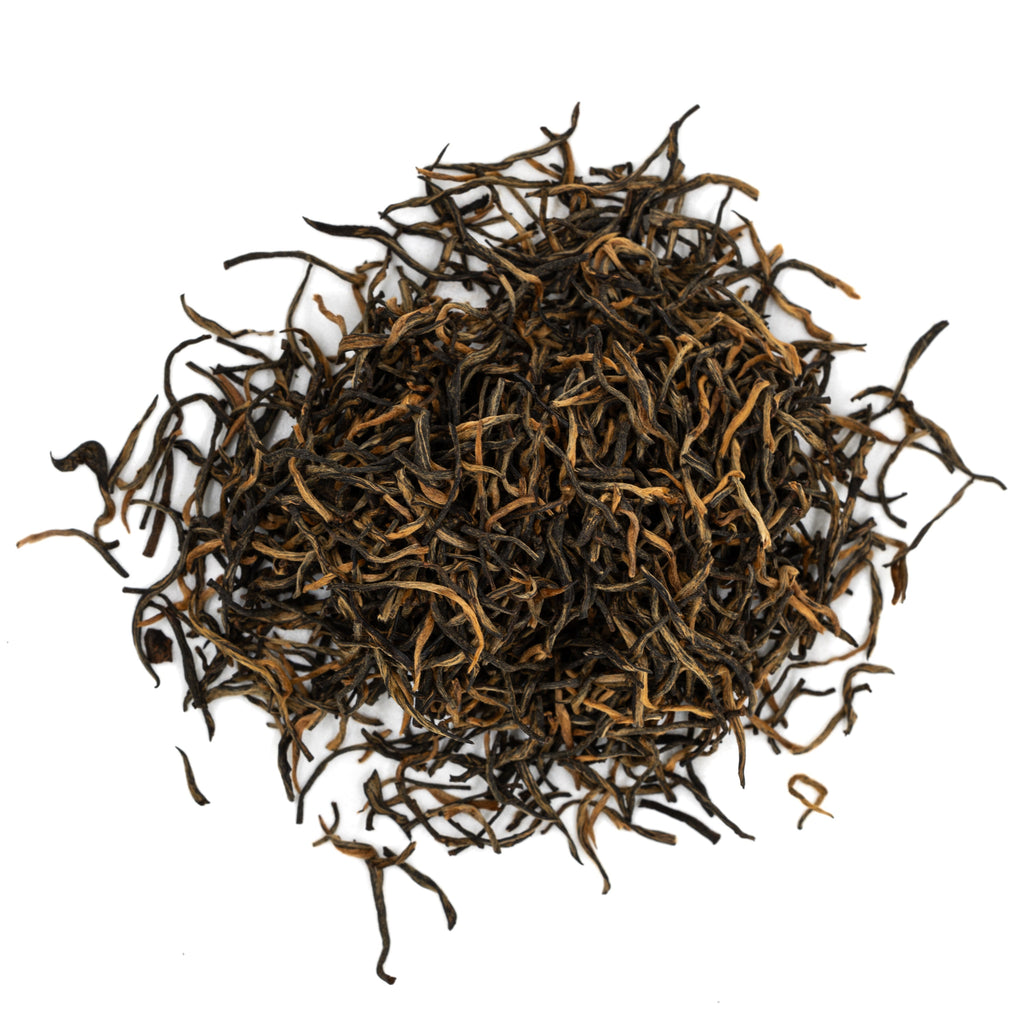Hong Cha

Hong Cha (红茶)
Also known as Red Tea, Black Tea, and 红茶.
Hong Cha is a category of tea that is fully oxidized.
Name
- 红 (pronounced Hong in Mandarin): means red.
- 茶 (pronounced Cha in Mandarin): means tea.
In the West, we tend to name teas based on the color of the dry leaves, which is why Hong Cha is often called “black tea” in English. In East Asia, though, teas are named for the color of the brewed liquor, so Hong Cha is called “red tea” due to its ruddy hue. This difference in naming practices can get confusing, especially when trying to differentiate between Hong Cha as “black tea” and Hei Cha, which is also often translated as “black tea.”
Flavor
Most people are familiar with the flat, tannic flavor of black teas found in tea bags. High-quality Hong Cha, however, offers an entirely different experience; they deliver a smooth, complex profile that leans into malt, fruit, smoke, and caramel.
The difference comes from the production method. Good Hong Cha is never crushed to pieces but instead preserves the integrity of the whole leaf, retaining the full character and allowing nuances in experience across multiple infusions.
Production
Producers make Hong Cha in five steps:
- Xian Ye (鲜叶): We start with fresh leaves. Gathered from the plant, they look like any other fresh-plucked leaf at this stage.
- Wei Diao (萎凋): Producers spread out the leaves and allow them to wither, reducing the amount of water in the leaves and making more pliable.
- Rou Nian (揉捻): Producers roll the leaves, breaking cell walls and releasing flavor compounds. This step also reduces the moisture content, which prepares the leaves for the final step.
- Wo Hong (渥红): The leaves, now bruised and wettened from the previous step, undergo an enzymatic reaction that oxidizes the polyphenols. This process turns them from green to reddish-brown.
- Gan Zao (干燥): Drying. A final blast of heat dries up any remaining moisture, making it shelf stable and ready to be sent to drinkers.
